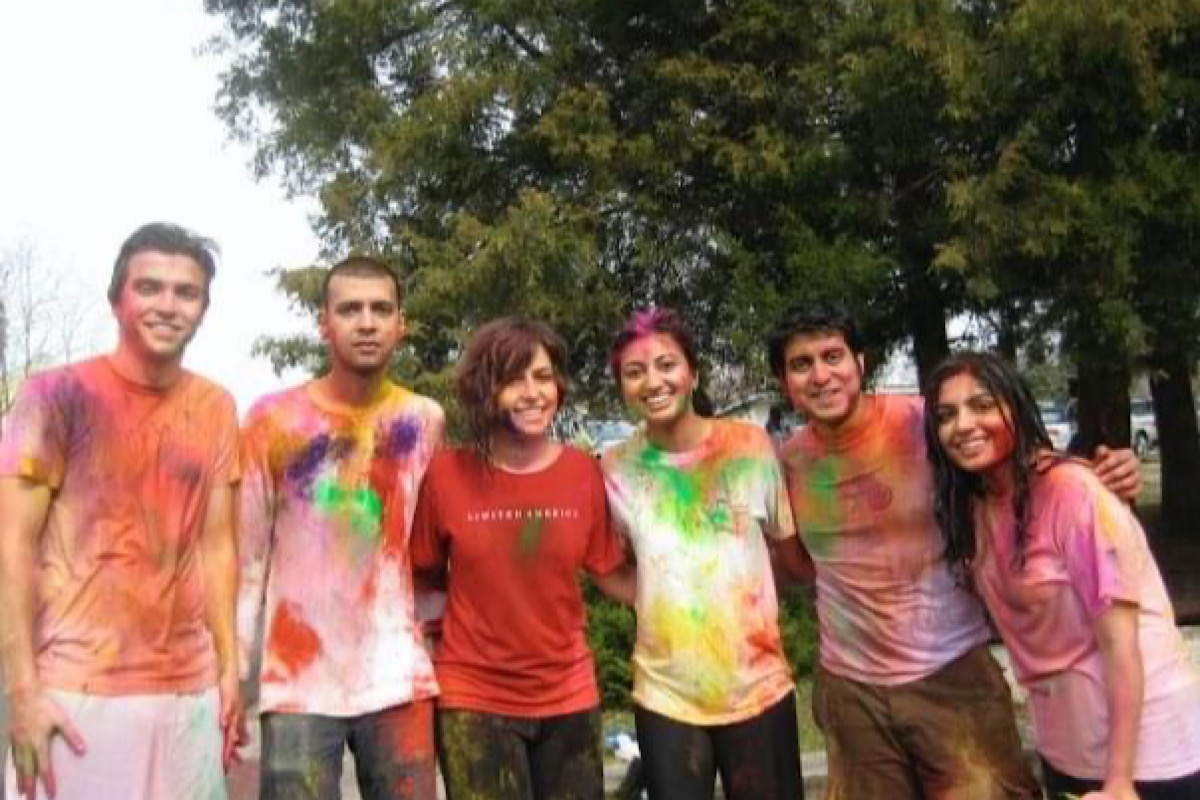India assumes Chair of Asian Disaster Preparedness Centre
India and eight neighbouring countries including Bangladesh, Cambodia, China, Nepal, Pakistan, Philippines, Sri Lanka and Thailand are the founding members of ADPC
When my two boys were growing up in the suburbs of Virginia, near Washington DC, where both my husband and I worked, we decided that we did not want to deprive them of the joys of playing Holi on Dol Purnima.

(Photo:SNS)
When my two boys were growing up in the suburbs of Virginia, near Washington DC, where both my husband and I worked, we decided that we did not want to deprive them of the joys of playing Holi on Dol Purnima. When we were children in India, we had so much fun during this time of the year when spring is welcomed by smearing abeer, the multi-coloured powder, on family and friends and dousing them in buckets of multi-coloured water. It seemed totally unfair that just because they are in the United States, they would not be exposed to this wonderful celebration of our culture.
So during our trips to India, we would carry back bags and packets full of the coloured powder. It was also always available in Indian stores across the US. On Dol Purnima, we would get other children of the neighbourhood and friends and schoolmates of our sons to join in on the celebrations, and boy did they have fun. These children were used to playing games during other occasions, like “trick or treat” during Halloween, but this was truly unique.
Most of the time, the celebrations would take place either in the large lawns or backyards of our house or in the other houses of our Indian friends and relatives, but frequently they would be held at the temples associated with the Indian community. One of the venues was the Hare Rama Hare Krishna Temple in Maryland. Before the Corona pandemic, local temples would organise “Holi Mela” with different food stalls and games for children. Earlier, when I was one of the executive board members of the Durga temple and the Northern Virginia Bengali Association (NVBA) decided to make me president of the organisation, I was very active and involved in all sorts of activities. But now that my sons have grown up, are extremely busy, and live in different parts of the country, we as a family have not really celebrated Holi in several years. But the tradition continues within the Indian community. Mainly to keep the new generation in the loop about the festivities in India. It is the same way that we celebrate Diwali.
Advertisement
NVBA organises big events during Durga puja, Saraswati puja, Poila Baisakh, and other occasions. For instance, during Rabindra Jayanti, cultural programmes are organised yearly when Tagore’s songs are sung and programmes including dance dramas are performed.
On Holi, many of my friends from the Indian community say they celebrate by doing a little extra cooking, preparing traditional sweets, and doing puja at home. They get together with family and friends, party, hold picnics and community potlucks, and of course do “Holi khela”.
Before the Corona pandemic, local temples would organise a holi mela with different food stalls and games for children.
For my family, the most recent “Holi khela” was when me, my husband Dipu, and my son Bubu (Vikram) played Dol with his college friends from Georgetown University.
We had explained to them the theme behind it in language that they would understand, which was that “Holi Dahan” is similar to spring cleaning, a concept they are used to.
Dol Purnima, or Holi, remains one of the most favourite festivities of my children.
The writer is a retired medical staff of the Georgetown University Hospital. She was Division Administrator of Hospital Medicine, which is a division of General Internal medicine.
Advertisement